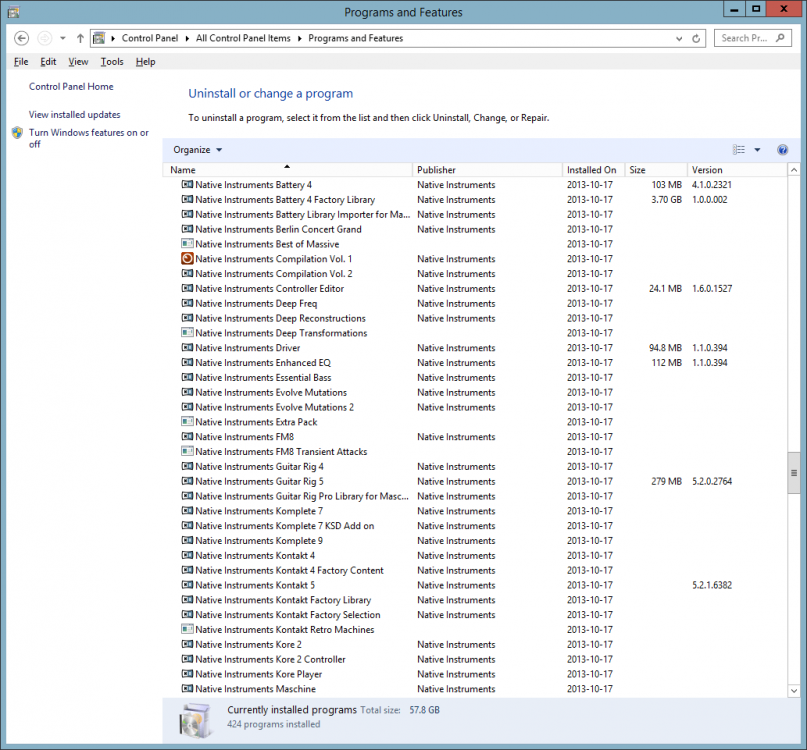The Linux "OS" is not created or maintained by amateurs. It's done by paid employees of companies like Red Hat, IBM, HP, and a lot of other big names (including Microsoft, to some extent). What tends to be done by Amateurs is the userland stuff...
I agree that these days, big companies contribute to Linux (even MS).
Debian develop and fund their distributions on a volunteer basis.
Some companies like Red Hat and SUSE have commercial versions of Linux.
I have no idea where Canonical gets its funds from.
Linux is highly configurable, but at a huge cost in usability, performance, and maintainability.
Basic level users (icon clickers) and Expert users (scripting, terminal jockeys) should have no problems using Linux.
Intermediate level users have the most problems, because they know how to solve problems in their favourite OS, but they are unfamiliar with the Linux Terminal.
I agree that most of the Linux GUI tools are inferior to Windows equivalents.
The main issue I have with Linux GUI tools, is the lack of a "Run as root" option in their context menus.
IMO, File managers are an exception (they are evenly matched).
Caja features, like multi-level copy/cut/paste operations, tabs and navigation options should be included in Windows Explorer.
Windows Explorer features, like the variety of Details view columns and tooltips should be included in Caja.
I'm dubious about your inclusion of performance.
Linux distros:
- Will generally run on hardware that has difficulty running Windows
- Run on more device types than Windows (from remote controls all the way up to super computers)
One reason is because they usually don't run AV programs.
On my PC:
- Linux Mint uses less resources (RAM and HDD space) than W7 does (the OS and programs use less space, than W7 alone).
- Anecdotally, VMware runs better on Linux, than it does on W7
A notable exception is Ubuntu 13.04.
I read quite a few complaints about it being (apparently) bloated and slow.
I'm also dubious about your inclusion of maintainability.
Linux distros are very low maintenance.
One reason is because they aren't "under siege" from malware creators.
Anecdotally, I can't remember having to reboot Linux Mint (or Ubuntu) more than once, or twice, because of weird behaviour or lock ups.
I have definitely had to reboot Windows (even W7) more than twice (during the same time period).
I've only had one Linux update (for Evolution) that caused major difficulties in Ubuntu.
Since Evolution was a program that I never used I purged it from my OS.
Why is it, that after all these years, you *STILL* can't drag and drop things in your typical desktop environment menus? Something you could do in Windows since Windows 95.
I have no idea what you are trying to describe.
The only W7 menu I can drag items into is the Start Menu.
And why is that applications *STILL* don't have resource forks, with icons and such so that you don't have to manually hook up bitmaps in DE's?
Again, I have no idea what you are trying to describe.
I've never had to find and attach icons to programs.
In the Linux distros I've played with, you can go to a folder (.icons) and find all the icons that the system and most of the programs use.
Another folder (.themes) has all of the GUI theme files.
... the problem is that everyone has to do things their own way, and they end up duplicating the effort... 20 Window managers and a dozen Desktop Environments... if all those man hours were spent on a unified system, Linux would be a force to be reckoned with... instead they spend their time in gridlock, re-implementing each others code because it doesn't use the correct license, or they don't like that something has too much white space, or some other list of silly reasons.
I agree that too many options is a problem.
IMO, that is an inevitable consequence of anyone being able to modify the code and then release it as a new distro (and not having to rely on income from sales to prop them up).
Try doing that with MS or Apple code and see how long you'll stay out of prison.
The current state of play is based on history.
In the 80's, there were other PC/software companies and they lost market share and eventually went out of business (for whatever reason).
Arguably, if MS hadn't entrenched itself in business and Apple hadn't entrenched themselves in the media/graphics sector, they might both have been wiped out by something else.
It wasn't that long ago that people would have laughed at you, if you had said that RIM was doomed.
That's also what keeps Apple and Microsoft from worrying that any significant number of users will abandon their products for Linux.
Apple users are fashionistas (with the possible exception of media developers).
IMO, MS was dreaming when they thought that all iPad users would throw their tablets away and swap to Surfaces.
I also suspect that a large number of Android users hate Apple and MS (no Surface sales to them either)
MS currently has a lock on the Enterprise market.
If they keep annoying business with "consumer fluff" and onerous and complicated licensing, they
might find customers actively looking for alternatives.
It was the onerous and complicated licensing restriction on UNIX that lead to GNU and Linux.
If the UNIX owners hadn't been so obtuse, we may have all ended up running UNIX PCs today.
BTW, I use Windows for ~96% of my computing (W7= ~95%, XP =~1%, Linux Mint = ~4%).











